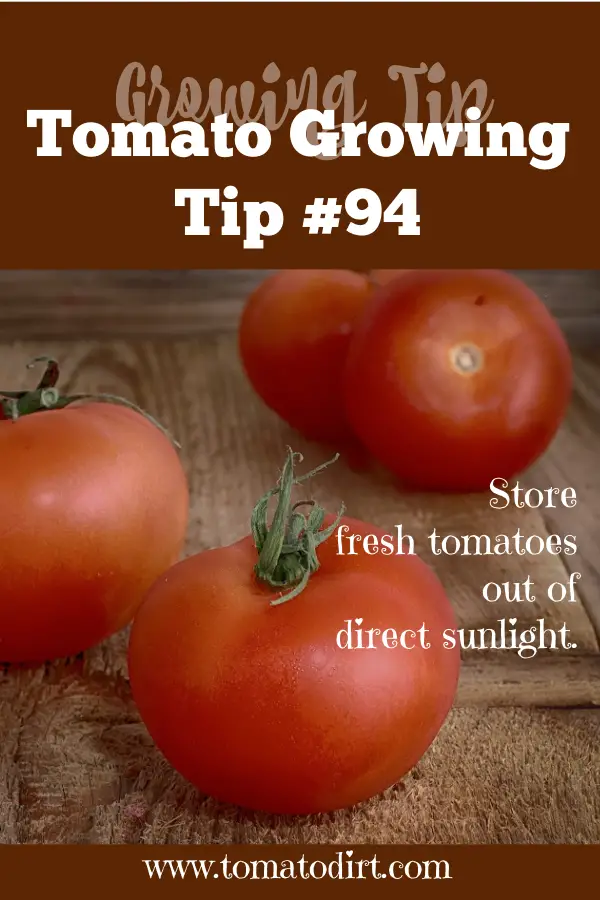FREE: 10 Must-Know Tomato Growing Tips Get The Guide
Read our affiliate disclosure here.
How to Store Tomatoes: A Gardener’s Guide
Since 2010, Tomato Dirt has garnered 4.8+ million views, making it the web’s leading online source for growing tomatoes in the home garden. Award-winning writer and Tomato Dirt owner Kathy Widenhouse has helped thousands of home gardeners grow healthier tomatoes. Be one of them when you get Tomato Dirt’s Growing Guide here.
Posted 8.5.24
When you know how to store tomatoes properly, you’ll be able to enjoy them at the peak of their flavor, texture, and quality. But make some slip-ups and your garden’s pride and joy can be reduced to a mealy, mushy mess.
Here’s what every gardener needs to know how to store tomatoes you can use them in a few days, a few weeks, or even in a few months.
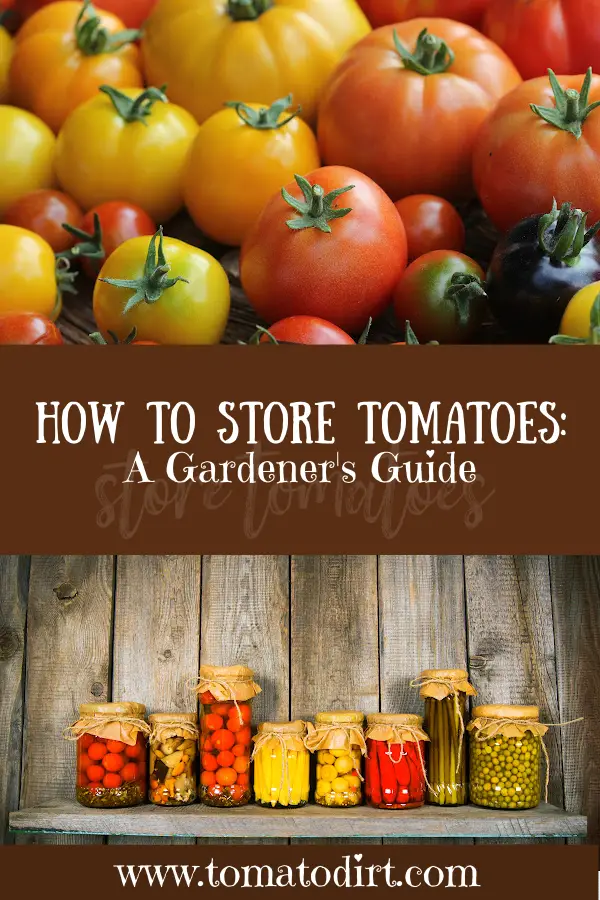
How to store fresh tomatoes –
especially after just picking them
Keep fresh tomatoes at room temperature until you’re ready to use them … until they’ve reached your desired level of ripeness. That goes for beefsteaks, globes, and even cherry tomatoes.
The main thing to remember is to keep tomatoes away from direct sunlight. The fruit’s skin protects its interior flesh.
How to store tomatoes after slicing
You’ve sliced into that ripe fresh tomato but haven’t used all of it. Will you serve the remainder within 4 hours? If so, then simply cover the exposed flesh with plastic wrap and leave the tomato on the counter. But any longer than that, store the sliced tomato in an airtight container or wrap it in plastic wrap. Place the cut tomato in the fridge and use it within a day or two before it gets bruised and spoiled.
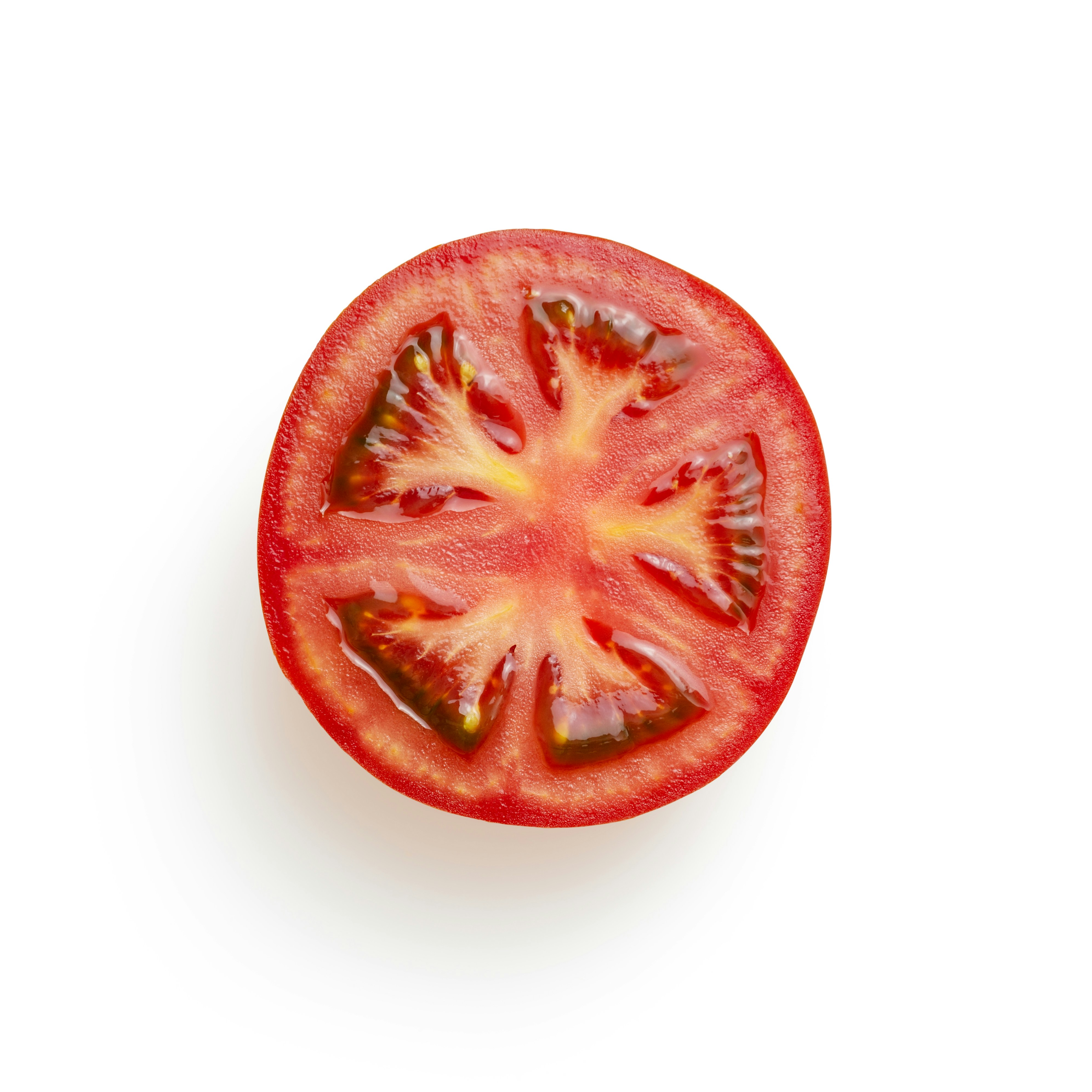
Should I store tomatoes stem up or stem down?
Store tomatoes with the stem side up. Doing so helps to ..
- Minimize moisture loss. The stem end of a tomato contains a small area where moisture and gases can escape or enter the fruit. By storing tomatoes stem side up, you reduce the amount of moisture loss from this area, which helps keep the tomato from drying out too quickly.
- Reduce bruising. Tomatoes can bruise easily, especially around the more delicate stem area. Placing them stem side up prevents unnecessary pressure on this sensitive spot, reducing the chances of bruising and thus extending their freshness.
- Preserve flavor and texture. The area around the stem is where the tomato is connected to the vine. Keeping this part intact and protected can help maintain the tomato’s flavor and texture for a longer period.
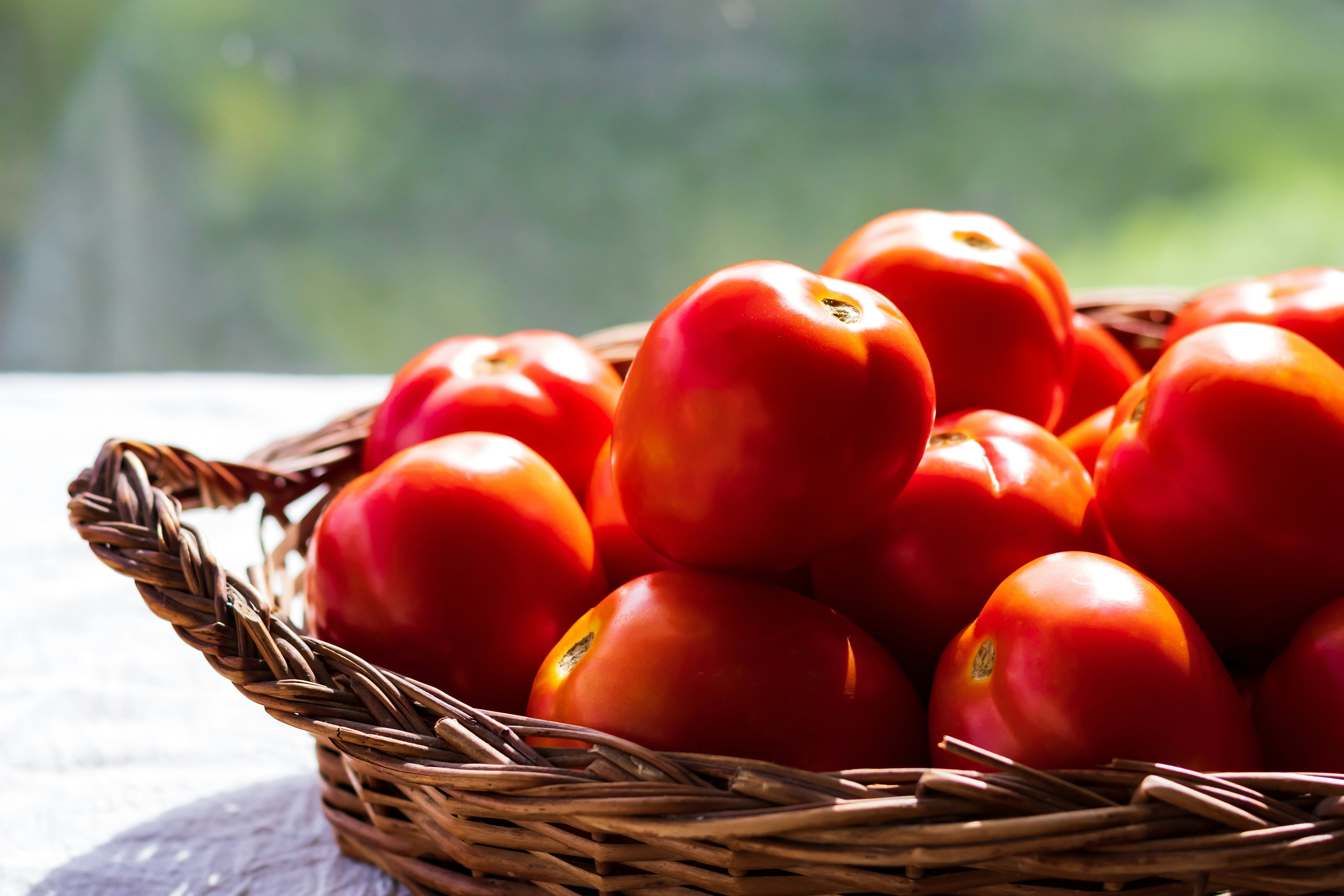
How to store tomatoes on the counter
Yes, you can set tomatoes on the counter to maximize their shelf life while maintaining flavor. Keep them away from direct sunlight. Store them stem up to prevent bruising and help them retain their freshness longer.
How to store tomatoes in the fridge
If you don’t plan to use tomatoes for a few days but they’re ripe, then take a chance and place them in the fridge. The cool temperatures won’t change the flavor but will affect the texture. Cold breaks down cell membranes inside the fruit.
It’s okay to refrigerate tomatoes when the fruit is ripe. Tomatoes begin to lose their flavor after they've in the refrigerator for a few days -- or even a few hours, so say some true aficionados. The culprit is lineolic acid, which turns into a compound that gives tomatoes their taste. Cold temperatures hamper that process.
But since you’ll only set fully-ripe tomatoes in the icebox, the flavor won’t decline.
However, the texture will become mushy or grainy if your tomatoes camp out in the fridge for more than a day or two.
If you need to refrigerate whole tomatoes, then set them in a paper bag or perforated plastic bag. Set them in the crisper drawer to maintain humidity. If you’ve already sliced the tomato, then place it in an airtight container or cover the exposed flesh with plastic wrap.
To use refrigerated tomatoes, pull them out of the fridge in plenty of time to bring the fruit back to room temperature before serving-- about an hour or two before you plan to eat them. In any case, use refrigerated tomatoes within a few days for best flavor.
How to store tomatoes for a long time
without a fridge
Yes, you can store tomatoes long-term without refrigeration. And by long-term, I mean a few days to a couple of weeks or a month or two. Your goal is to preserve their flavor and texture while they ripen. You want to be able to use them at their peak, whether it’s fresh, cooked, or to preserve.
The key? Keep unripe tomatoes at room temperature in a cool, dry place such as your garage or basement. Check them regularly – every couple of days. When a tomato begins to change shade from green to an orange or pink hue, bring it out of its cool storage and place it on your kitchen counter to complete the ripening process.
How to store tomatoes to keep them fresh
Whether you use tomatoes right away or wait for them to ripen, you can keep them fresh by following a few simple principles. This goes for storing tomatoes on the counter for quick use or storing tomatoes long term so they can ripen.
- Keep tomatoes away from direct sunlight.
- Place tomatoes in a single layer with the stem side up to prevent bruising.
- Refrigerate ripe tomatoes only if you need to extend their shelf life slightly.
How to store tomatoes for months
Now we’re talking about preserving tomatoes in some fashion apart from keeping them fresh. Should you store tomatoes until you’re ready to can, freeze, or dry them? Only at room temperature. Refrigerating tomatoes can affect their texture and flavor, so it's best to can them fresh. But there’s good news! To store tomatoes for several months, you’ve got three options.
- Freezing tomatoes: Prepare tomatoes, pack in freezer containers, and store them in a freezer until you’re ready to use them. Frozen tomatoes are best used in cooked dishes like sauces and soups.
- Canning tomatoes: Prepare tomatoes, process them, and store them in sealed jars until it’s time to use them as juice or in soup, chili, sauces, and prepared dishes.
- Drying tomatoes: Drying tomatoes is easy, economical, and a good way to save some of summer’s bounty if you’re running out of room in your freezer or on your pantry shelf. The idea is simple: remove water from the tomatoes to preserve them.
How to store tomatoes in the freezer
Blanch and freeze whole or chopped tomatoes and store in airtight containers or freezer bags. Or you can freeze cherry tomatoes individually on cookie sheets and then store in plastic containers or freezer bags. Thaw tomatoes to use in sauces, stews, soups, casseroles – any cooked dish.
How to store canned tomatoes
Label canned tomatoes with the date. Store them in a cool, dry place away from direct sunlight and sources of heat. Keep canned tomatoes away from extreme temperatures. They should not be exposed to freezing temperatures or very high heat, as this can affect the quality of the product. A pantry or cupboard is ideal.
If you only use part of a can of tomatoes, transfer the leftovers to a glass or plastic container with a lid and refrigerate. Use them within a few days for best quality.
How to store sun-dried tomatoes
There are at least 4 ways you can dry tomatoes: sun dried tomatoes (tomatoes are dried outside in the sun or in a very hot automobile); oven-dried tomatoes (tomatoes are dried in your kitchen oven); dehydrated tomatoes (tomatoes are dried in a food dehydrator); and microwave-dried tomatoes (tomatoes are dried in a microwave). But once tomatoes are dried, you need to store them properly to maintain their flavor. The best ways to store sun dried tomatoes are ...
- In the pantry or on a shelf. Place sealed containers in a cool, dry, dark place, maintained at about 60-70ºF. If completely moisture-free, dried tomatoes will keep flavor and texture for up to a year.
- In the refrigerator or freezer. Seal tightly to prevent freezer burn. Label with date. Dried tomatoes can be stored in the freezer or refrigerator and maintain flavor and texture for about 18 months.
- In oil. Choose a small jar with a tight-fitting lid. Place sun-dried tomatoes in a jar with a tight-fitting lid. Cover with quality olive oil. If possible, seal the jars. Store in the refrigerator or pantry.
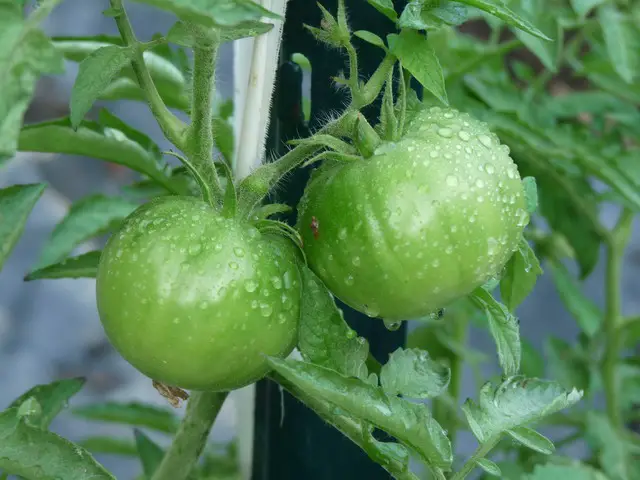
How to store green tomatoes
Perhaps you’ve accidently picked green tomatoes. Or maybe you harvested your crop because the forecast was for frost. In any case, you’ve got green tomatoes and you’ve exhausted all your green tomato recipes. But never fear! You can store green tomatoes them until you’re ready to use them.
Simply keep tomatoes at room temperature in a cool, dry place such as your garage or basement. One caveat: make sure your storage area has good ventilation, allowing plenty of air to circulate while the fruit ripens. Check the tomatoes regularly – every couple of days – and pull out those that begin to show hints or pink or red.
You can also hasten the ripening process in green tomatoes by placing them on a windowsill .. in a paper bag (or a plastic bag with holes) with a piece of ripe fruit, such as an apple or banana … in a jar with a piece of ripe fruit … or by wrapping them loosely in newspaper. Stack the fruit in a single layer in a box on a garden rack (sometimes called an orchard rack or ripening rack). Check tomatoes every 5-7 days.
Can you store tomatoes in a plastic bag?
Yes, but with caution. If using a plastic bag, make sure it's perforated to allow for airflow. Too much moisture can lead to mold growth and spoilage.
Can you store tomatoes and onions together?
Store tomatoes and onions separately. Onions can impart odors to tomatoes, affecting flavor.
Can you store tomatoes and potatoes together?
It's best to store tomatoes and potatoes separately. Potatoes release ethylene gas, which can accelerate the ripening and spoilage of tomatoes.
Can you store tomatoes and avocadoes together?
As with potatoes, it's best to store tomatoes and avocados separately – but in order to protect the avocadoes. Tomatoes can release ethylene gas, which can accelerate the ripening and spoilage of avocados.
Top tips for storing tomatoes
- Handle carefully. Handle tomatoes gently to avoid bruising, which can lead to spoilage.
- Place stems up. Store tomatoes with the stem side up.
- Keep fruit at room temperature. Store ripe tomatoes at room temperature. Refrigerate only if necessary and use within a few days.
- Store tomatoes separate from other produce. Keep tomatoes away from ethylene-producing fruits like bananas and apples, unless you’re trying to hurry along the ripening process.
- Check tomatoes regularly. Inspect your tomatoes every 2-5 days to monitor ripening and to look for any signs of spoilage.
- Preserve tomatoes for the long-term. If you’ve got an abundance of fruit, consider freezing, canning, or drying them to have to use for many months to come.
More About Storing Tomatoes
How to Store Sliced Tomatoes ...
Is it ripe? When to pick tomatoes at peak ripeness ...
Canning Tomatoes: the basics to help you get started ...
Canning Tomatoes FAQs: Frequently Asked Questions ...
How to prepare tomatoes to use in cooking ...
Freezing tomatoes: the basics you need to know to get started ...
Drying tomatoes is easy, cheap, and saves space ...
Drying tomatoes FAQs: answers to your questions ...
More about canning tomatoes, drying tomatoes, and freezing tomatoes on our Pinterest boards...
Return from How To Store Tomatoes to Tomato Dirt home
As an Amazon Associate and Rakuten Advertising affiliate I earn from qualifying purchases.
SHARE THIS PAGE:
FREE! 10 Must-Know Tomato Growing Tips: 20-page guide
Get yours here:




